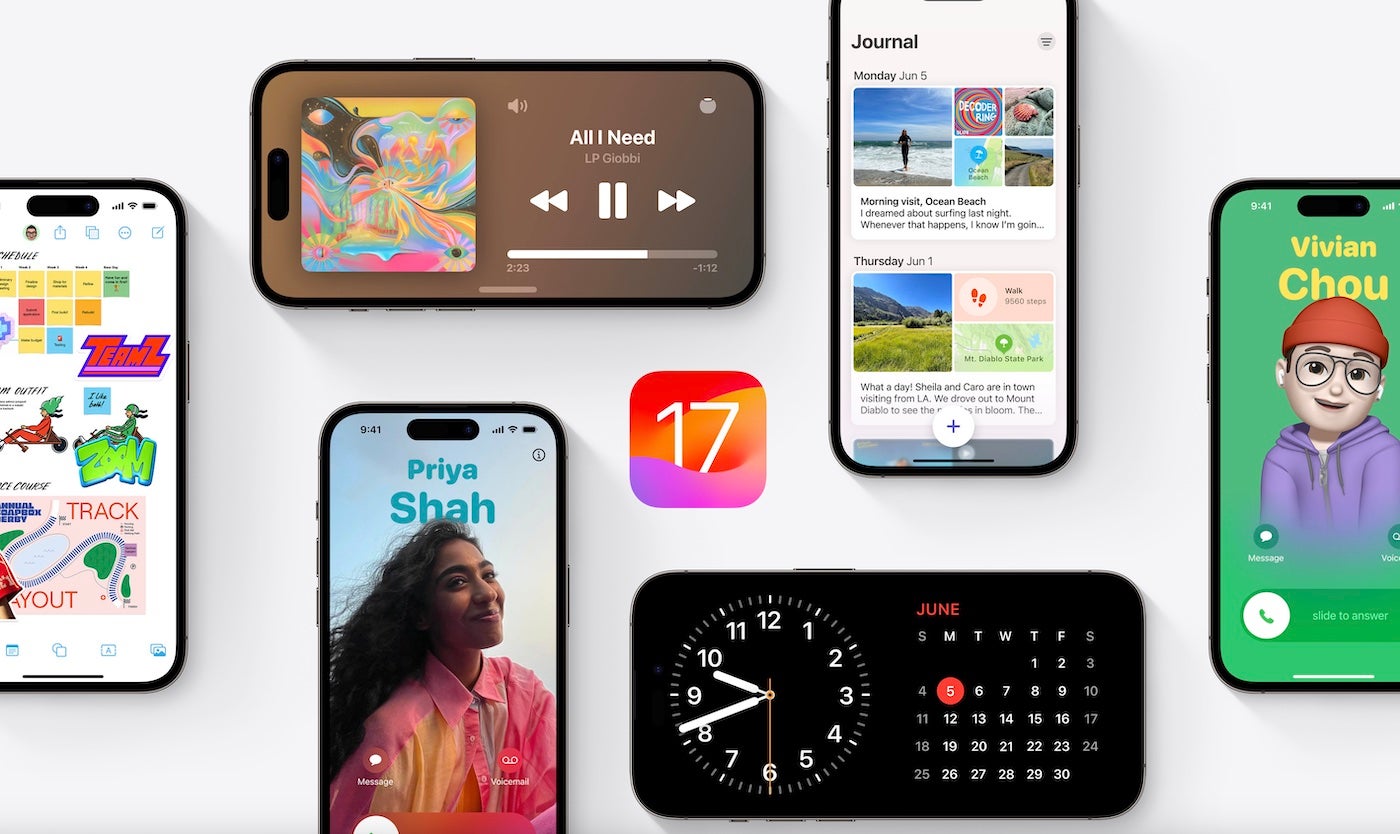
While Apple’s Worldwide Developer Conference keynote on Monday showcased the buzzworthy Vision Pro augmented reality headset, the announcement of iOS 17 should not be overlooked. This update to Apple’s latest mobile operating system offers iPhone users great new features that focus on improving communication, sharing content and adding intelligent input features.
Let’s explore everything you need to know about iOS 17 including features, release date and how to get the beta release.
Jump to:
iOS 17 is the seventeenth iteration of the mobile operating system Apple releases for distribution on iPhone models. This new version of iOS includes features for business users, enterprise customers, developers and consumers; examples include the ability to better manage contacts, FaceTime features, AirPlay and content-sharing features, and privacy-related features.
iOS 17 was announced on June 5, 2023, during the Apple WWDC keynote address.
SEE: Previous iterations of iOS in these TechRepublic cheat sheets: iOS 16, iOS 15, iOS 14, iOS 13.
The exact release date for iOS 17 is not publicly known, though the full release is slated for Fall 2023. If tradition holds, we should expect iOS 17 to be released in approximately September 2023, perhaps coinciding with the release of new iPhone hardware.
Apple released a developer beta of iOS 17 for registered developers on June 5, 2023. Developers can register for the beta and download it from the Apple Developer website.
A public beta of iOS 17 for non-developers will be made available through AppleSeed in July 2023 for installation on non-developer devices.
As of June 5, 2023, only registered Apple developers may download and install iOS 17 on their devices.
iOS 17 should only be installed on development-specific hardware because features may not be fully implemented at this time, and bugs are common in beta releases. Using this beta on production accounts and devices may result in data loss.
Registered developers should follow these steps to download and install the iOS 17 beta on development devices. Note: Apple requires that any device the beta is installed on is part of the Apple Developer Program.
iOS 17 will be compatible with the following iPhone models:
Devices not listed here will not receive feature updates contained in iOS 17 and will only receive select updates for security for older iOS versions. Most notably, iOS 17 will not be compatible with the iPhone 8, which is a long-time enterprise-issued device.
Since the inception of the iPhone’s Phone app, it has remained relatively unchanged. In iOS 17, it includes a lot of new features, such as the ability to set a profile picture and customize it for what shows up on other devices when you call them (Figure A).
Figure A
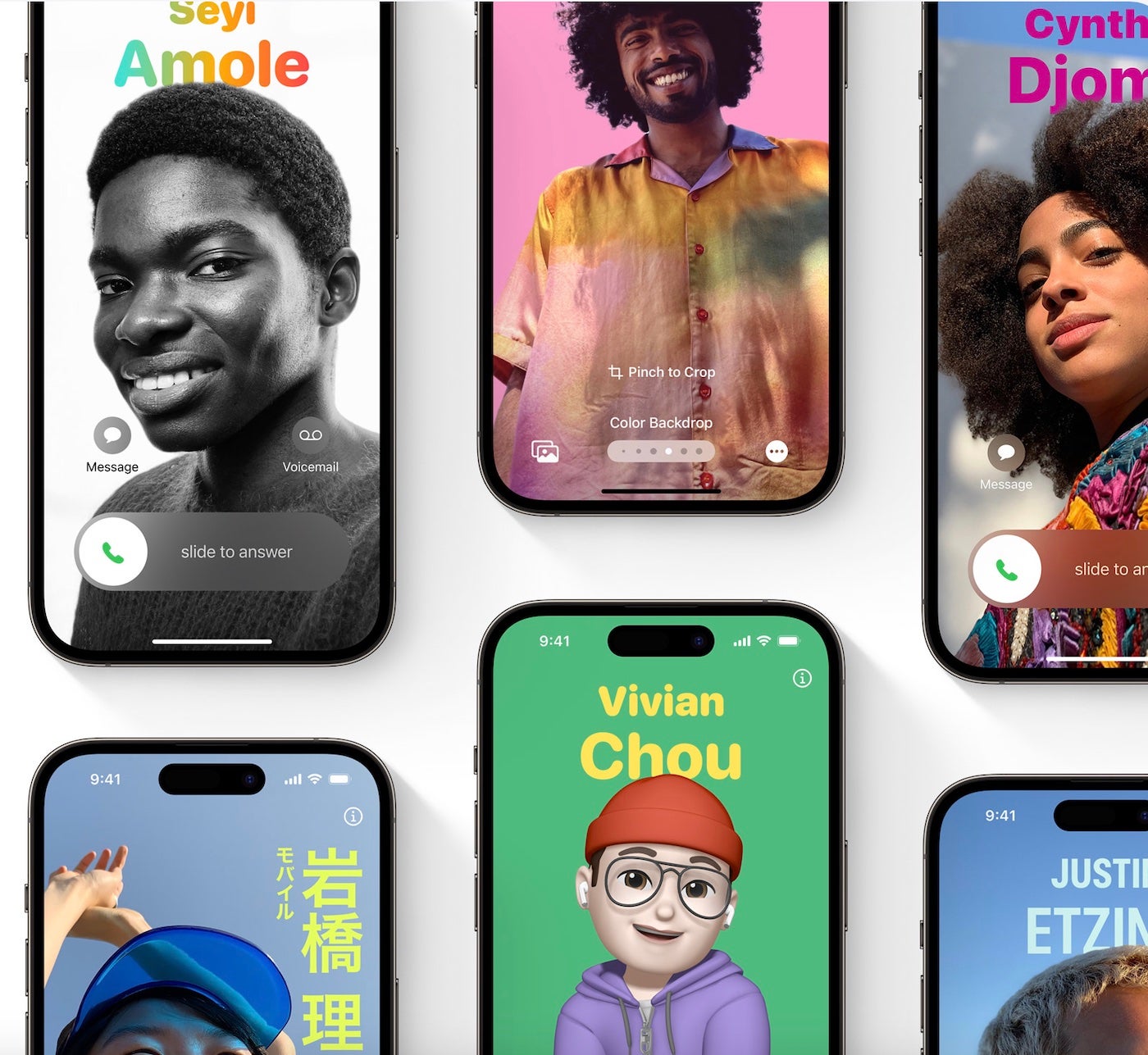
In addition, you can screen callers with the Live Voicemail feature, allowing you to see on the screen a dictation of what the caller says during the voicemail recording and letting you pick up and take the call while the caller is recording their voicemail.
For many iPhone users, Messages is the most used app on their device. New features in this app (Figure B) allow you to more seamlessly use iMessage apps to integrate with messages, search with filters that let you refine searches to a particular contact and context, or catch up more effectively in a group chat by jumping to the last unread message.
Figure B
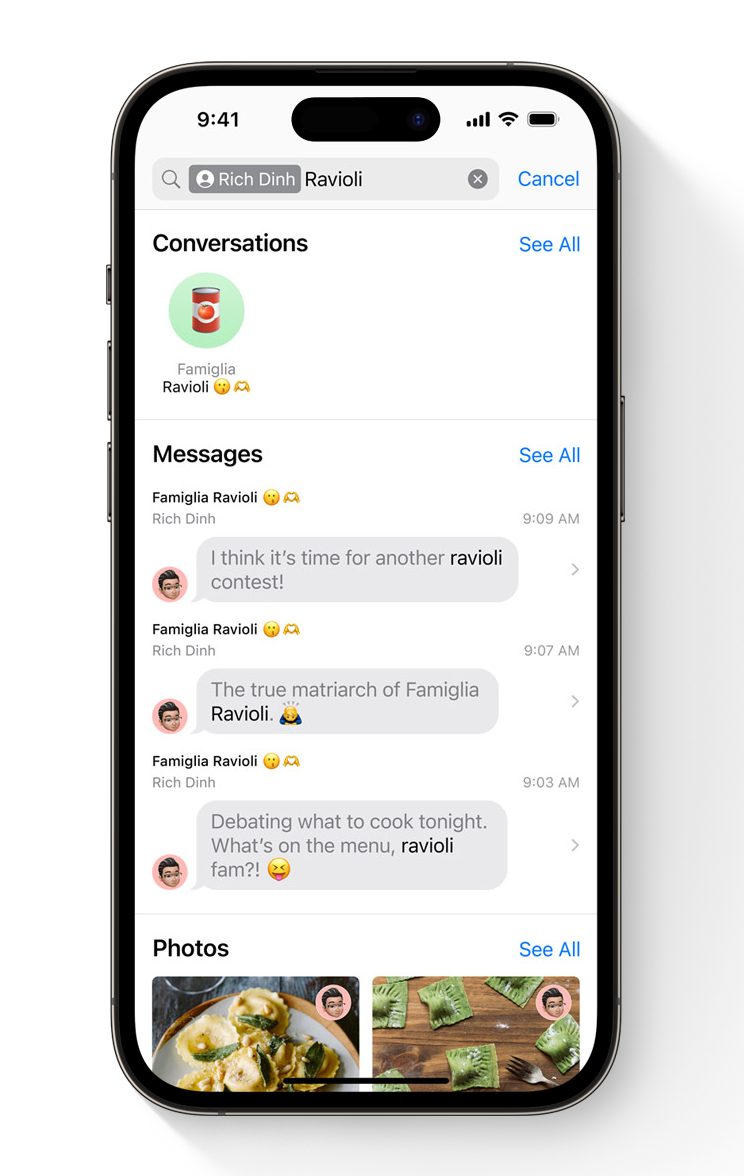
In addition, if you prefer to use voice messages inside of the iMessage feature, these voice messages will now be transcribed inline, allowing for better searchability and the ability to read a voice message instead of needing to listen to it.
FaceTime is receiving a big overhaul in iOS 17. In FaceTime, you will get the option to leave a video voicemail for a user when they’re unavailable. Also, while on a FaceTime call, you will be able to perform hand gestures as well as react with 3D effects in the video. This is great when you want to give a quick thumbs-up and have it called out more prominently during a meeting.
Apple has updated widgets in iOS 17, so they are interactive. Plus, you will be able to tap items in the widget to interact with the apps they’re connected to without opening the app; this will make interactivity with widgets much better and increase their usefulness for many apps.
Apple introduced a new way to use your iPhone while it’s charging or just sitting on your desk with a new feature called Standby (Figure C). This feature lets you rotate your iPhone while it’s charging to see an interactive view of your calendar, widgets, clock and more.
Figure C
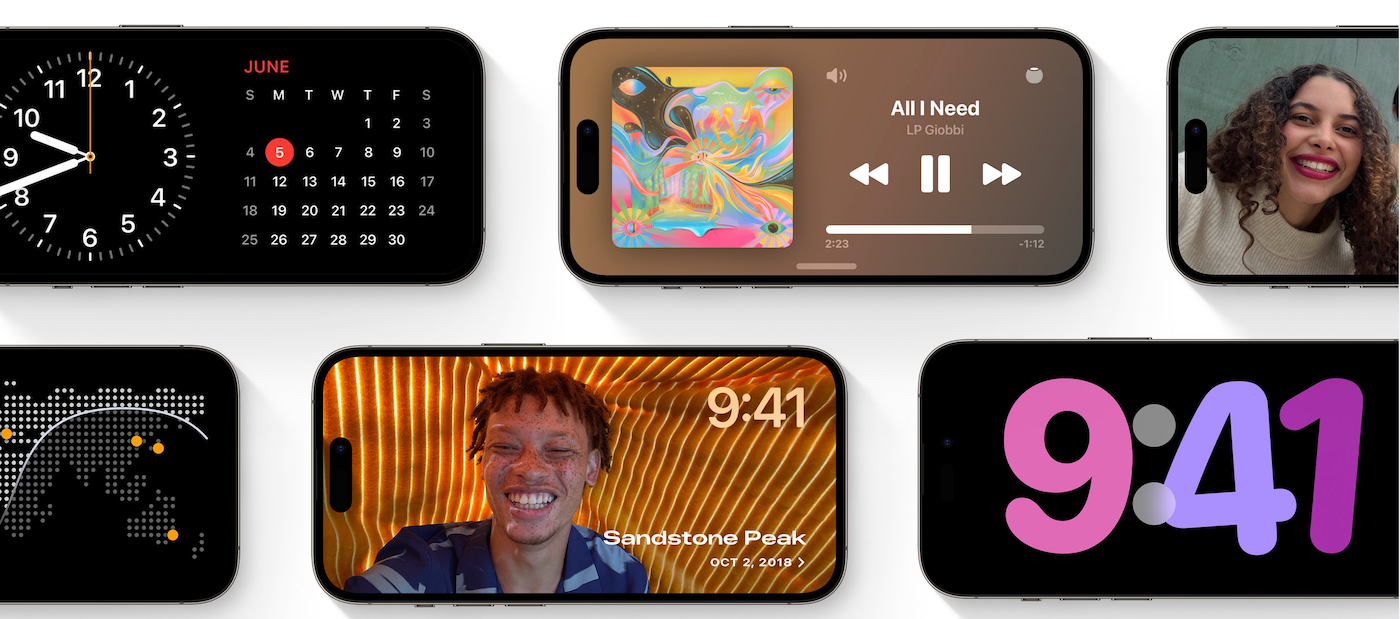
Standby can turn your iPhone into a smart home-style screen for free and add a lot of useful features when it would otherwise just be charging and not in use, making for great glanceable interfaces while working, driving or at night while charging your device.
AirDrop received a major update after several changes to this system over the course of the previous year. AirDrop in iOS 17 will enable users to share data between iPhones or Apple Watches with ease by simply tapping their devices together (Figure D).
Figure D
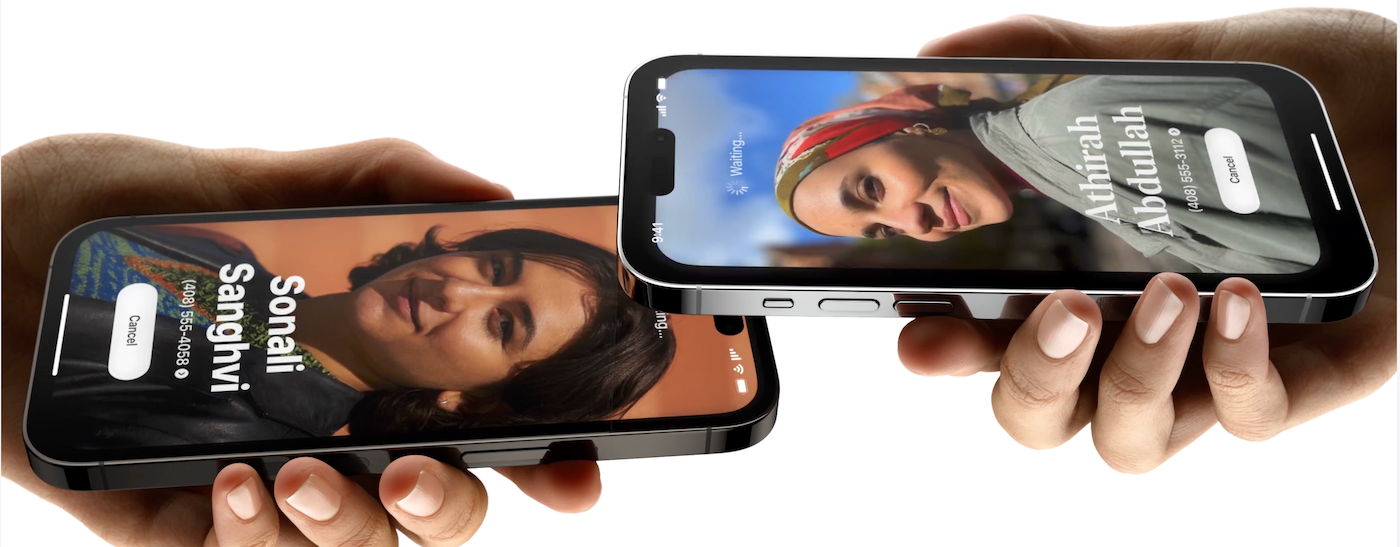
A new feature called NameDrop will enable two users to easily share their contact information (or a subset of contact data chosen by each user) by simply tapping their iPhones together. In addition, AirDrop will allow users to start a transfer, then leave AirDrop range and still continue transferring data between devices over the internet securely and privately.
SEE: How to limit AirDrop spam in iOS 16.2
Apple notes that iOS 17 has substantial keyboard improvements that make for a better typing experience for iPhone users.
Autocorrect is more effective at finding and replacing misspelled words and being more intentional about which words to correct. Autocorrected words will appear with an underline, allowing you to tap the word to revert to the non-autocorrected word instead.
In addition, new predictive typing will suggest words as you type, and pressing the spacebar will accept the word or phrase suggestion and insert it automatically as you type, making for much faster typing while on the go on iPhone and iOS 17.
Last year, Apple introduced passkeys as a way to reduce the need for passwords and make securing your online accounts more seamless and digitally secure. This year, Apple has added the ability to share your passwords and passkeys with other iCloud users right from the Settings app.
Select Settings | Passwords, and then, tap a password you’d like to share. This presents an option to share the password or passkey with others.
You can also create groups of passwords to share with trusted contacts, and when these passwords change or update, they’ll all receive the updated password. This is great for company or family password sharing for websites and accounts that are accessed by multiple people through a single account.
AirPlay’s update in iOS 17 will allow the system to automatically recommend content to be AirPlayed over time (Figure E). This feature, coupled with the ability for Apple TV to display a QR code to connect easily, means that sharing content via AirPlay for conferences and presentations will be easier than ever.
Figure E

Apple is baking new PDF editing capabilities into iOS 17, making it easier to fill out PDFs that you’ve received by email or message or scanned in through Notes. PDFs will be scanned by built-in machine learning technology to find areas that need to be filled out, allowing you to easily tab through a document and type in data that needs to be inputted. Then, you can sign and date documents using your saved signatures from iPad using Apple Pencil or macOS.
In iOS 17, Apple has updated the following privacy and security features, continuing to make it one of the most secure mobile operating systems in the world: